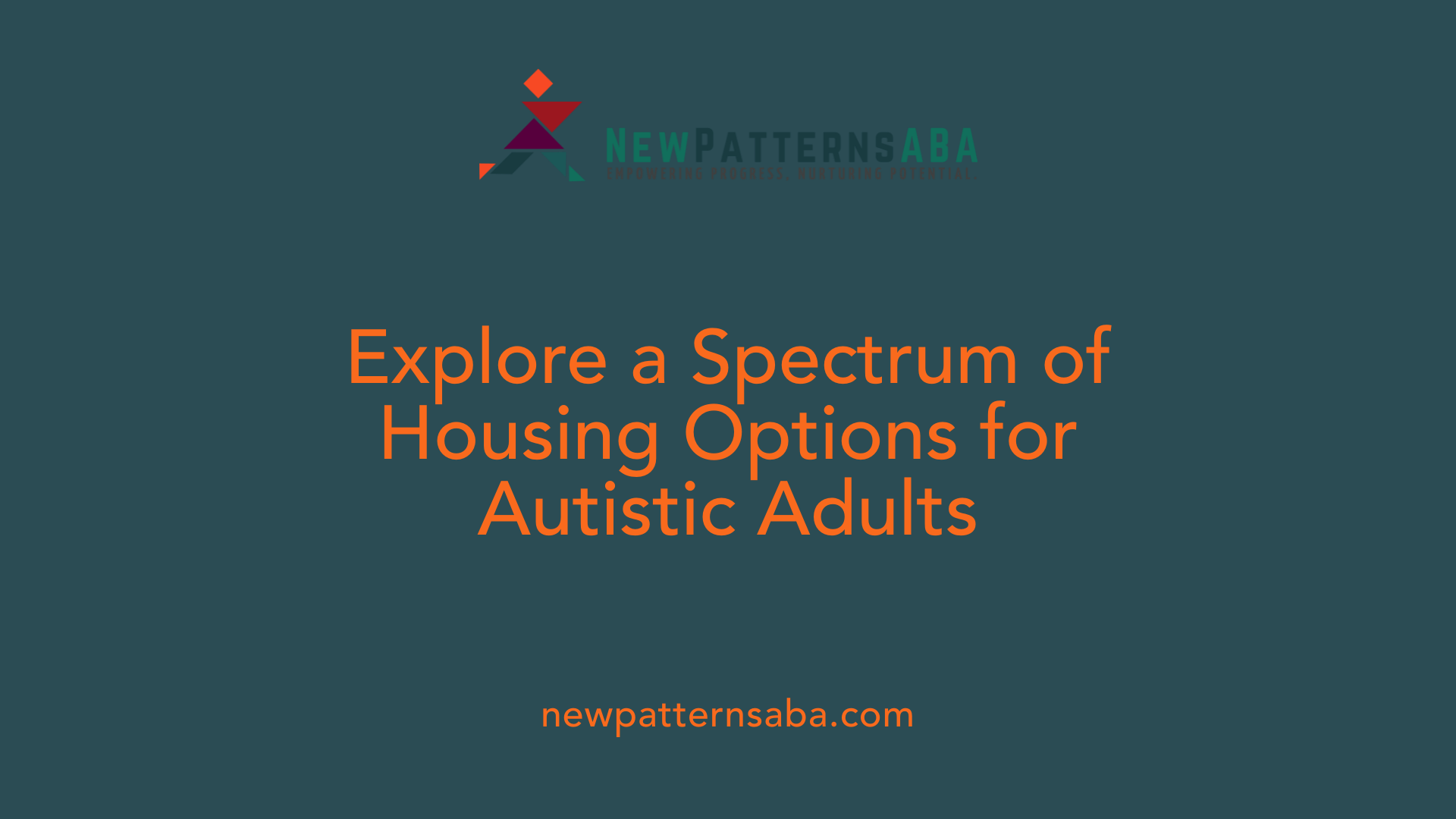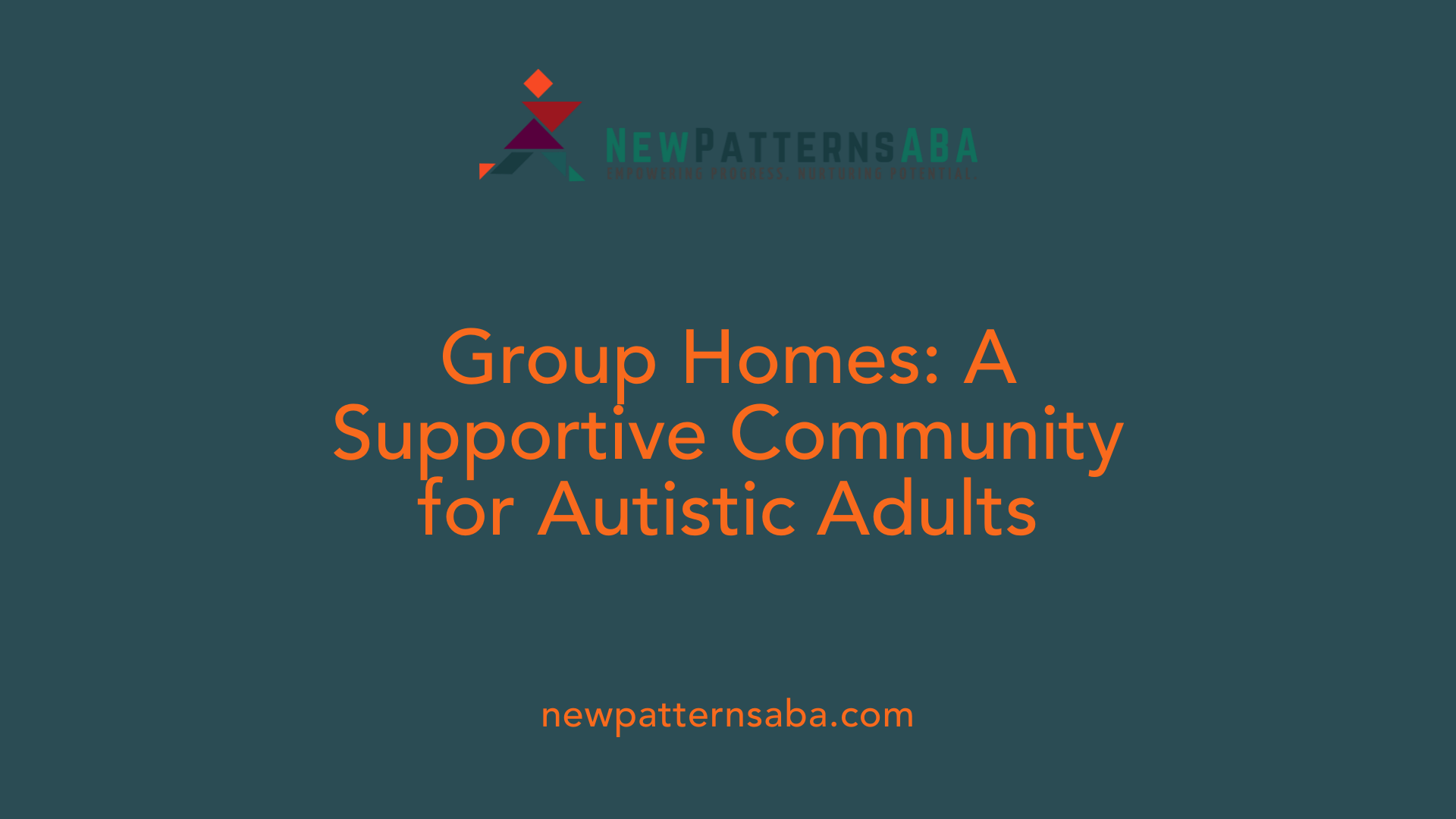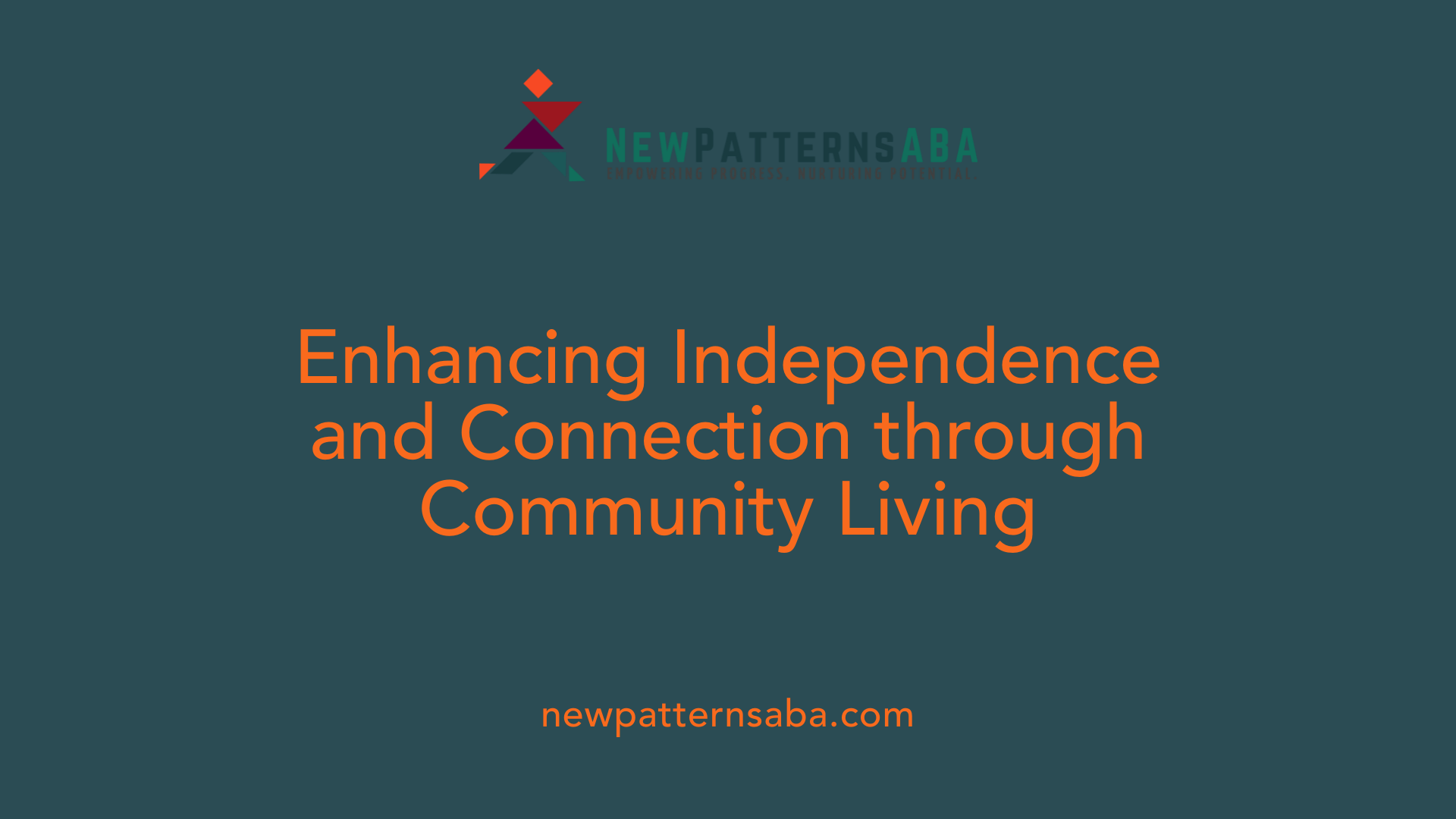Understanding Housing Options and Support Systems
As awareness of autism advances, so does the importance of accessible, supportive housing solutions that promote independence, community engagement, and quality of life for autistic adults. From traditional group homes to innovative supported living models, a spectrum of options exists, tailored to diverse needs and preferences. This article explores these housing types, the support services they include, and how caregivers and autistic individuals can navigate the complex landscape of community-based living.
Diverse Housing Options for Autistic Adults

What housing options are available for autistic adults?
Housing choices for adults with autism are wide-ranging and carefully designed to meet individual preferences and support needs. These options include independent dwellings such as apartments, condominiums, single-family homes, or townhouses, allowing capable individuals to manage daily responsibilities with minimal or no assistance.
For those requiring varying levels of ongoing help, shared living models are prevalent. Supported living services enable individuals to reside in their own homes or apartments while receiving tailored support for daily tasks and personal care. These services promote independence while ensuring safety and community engagement.
Group homes are another vital option, housing typically between 2-10 residents in a communal setting. Staff support is available on-site, offering assistance with daily routines, social interaction, and community activities, thus fostering social skills and independence.
Cooperative living arrangements, or co-ops, also play an important role. These involve shared ownership or management of residential properties, encouraging community participation and collective decision-making.
Specialized facilities cater to individuals with more significant needs. Community Care Facilities and Intermediate Care Facilities provide intensive support, medical supervision, and round-the-clock care. These are especially suitable for adults with complex health or behavioral needs who require a structured environment.
Community initiatives aim to foster inclusive environments and improve stability for autistic adults. Projects like community-based residential supports integrate services within neighborhoods, promoting social connections and community participation. These efforts are vital for enhancing quality of life and reducing feelings of loneliness.
In summary, housing options for autistic adults cover a broad spectrum—from independent living to highly supported environments. Each option is designed to reflect personal capabilities, support requirements, and aspirations, emphasizing accessibility, personalization, and community integration.
Support Services in Community-Based Housing

What support services are available for autistic adults in community-based housing settings?
Autistic adults living in community-based housing have access to a variety of support services designed to promote independence, safety, and community involvement. These services include assistance with daily activities such as cooking, cleaning, and personal care, provided by trained staff or support personnel, often around the clock or as needed.
Healthcare support and medication management are also integral, with many programs offering regular health assessments, help with managing medications, and coordination with healthcare providers. This ensures that medical needs are met promptly and appropriately, reducing health risks and enhancing well-being.
Social skills development and community engagement are crucial components of supported housing. Programs may include social skills training, recreational activities, and facilitated interactions with neighbors and community members to foster inclusion and reduce feelings of loneliness or social isolation.
Funding for these supports often comes from government programs like Medicaid's Home & Community-Based Services (HCBS) and the Developmental Disability Waiver. These programs cover services such as adult day care, assistive technology, case management, supported employment, and transitional support, all aimed at increasing independence and community integration.
Additional resources and guidance are available from organizations such as the Autism Housing Network, Autism Society, and The Arc. These organizations advocate for better housing options and provide information about accessing resources, understanding funding opportunities, and planning for long-term support.
Federal initiatives like the Section 811 Supportive Housing program and Housing Choice Vouchers from the U.S. Department of Housing and Urban Development (HUD) also help make housing more affordable and accessible for autistic adults. These programs support rental assistance and promote development of affordable, inclusive housing units.
Overall, the combination of supportive services and funding programs aims to create environments where autistic adults can live safely, independently, and actively participate in their communities. The goal is to foster a sense of belonging, promote self-advocacy, and build citizenship within supported community settings.
Group Homes as a Viable Housing Alternative

Are group homes a suitable housing option for autistic adults?
Group homes are often considered a practical choice for many autistic adults, particularly those who benefit from structured support and a supervised environment. These residential settings typically house between 2 to 10 residents, offering a balance of community and personalized care.
Structure and support levels in group homes vary depending on individual needs. Some provide extensive assistance, including help with daily living activities, behavioral support, and medical management, making them ideal for residents requiring more comprehensive care.
Most residents in group homes are adults with autism who need assistance with daily tasks, social skills, and integration into community life. These settings foster social interaction, helping residents build relationships and develop independence within a supported environment.
Advantages of group homes include opportunities for socialization, community engagement, and life skills development. Residents often participate in activities that promote independence, such as cooking, cleaning, and managing appointments. The supportive staff also offers targeted guidance, encouraging growth and confidence.
Despite these benefits, there are notable barriers. The availability of group homes is limited due to resource shortages and funding constraints. Many adults with autism and their families face challenges related to affordability, as the cost of living in such facilities can be high. Zoning restrictions and local regulations sometimes hinder the establishment of new group homes, further reducing options.
While group homes can be highly beneficial for certain individuals, access remains a barrier for many. Resources like the Autism Housing Network and organizations such as Bello Machre work to expand these options and advocate for more inclusive community services.
Personalized planning, supported by tools like Autism Speaks' Transition Roadmap, helps families evaluate whether a group home aligns with the individual’s needs, preferences, and available resources. In conclusion, while not suitable for everyone, group homes stand as an important housing option in the spectrum of community-based supports for autistic adults.
| Housing Type | Description | Support Level | Typical Residents |
|---|---|---|---|
| Group Homes | Small residential communities with shared support | Moderate to high support, staffing-based | Adults with autism needing structured support |
| Assisted Living | Semi-independent living with personal care support | Medium support | Adults who require some assistance but can live semi-independently |
| Independent Living | Self-managed housing, minimal external support | Low or no support | Capable adults with autism who manage daily tasks |
| Family Living | Residing with family, often with ongoing support | Varies depending on family involvement | Adults living with family members |
Estimated total support levels and residential types provide a spectrum to meet diverse needs of adults on the autism spectrum. Building more inclusive housing options remains a priority to address existing resource gaps.
Models of Supported Living and Their Benefits

What are the different models of supported living for autistic adults?
Supported living options for autistic adults are diverse and designed to fit individual needs, preferences, and levels of independence. These models aim to foster community integration, personal growth, and tailored assistance.
One common arrangement is shared living, which includes co-housing communities and accessory dwelling units (ADUs). These setups allow autistic adults to live near family or in independent settings while benefiting from shared resources and support if needed. Co-housing often involves multiple households sharing communal spaces and responsibilities, promoting social interaction.
Supported housing programs span a range of environments, such as supervised apartments and group homes, where residents receive varying degrees of assistance. These programs are often tailored to provide the right balance of independence and support, enabling residents to manage daily activities while having access to help when required.
Independent living communities represent another model, where capable adults live alone or with roommates in apartments or condominiums. These communities often include access to support services that can range from minimal to comprehensive, depending on individual needs.
For those requiring more comprehensive support, specialized settings such as assisted living facilities or continuing care retirement communities (CCRCs) are available. Assisted living offers semi-independent living combined with personal care and daily assistance, often crucial for older adults or those with additional health needs.
The variety of supported living models underscores the importance of personalized approaches. Housing providers, healthcare teams, and social services collaborate to create environments that promote autonomy while offering necessary support.
Why are these models beneficial?
These supported living models provide multiple benefits for autistic adults:
- Enhanced independence: Many individuals gain confidence and self-reliance through settings that allow autonomy with adequate support.
- Community engagement: Living in supportive environments fosters social connections, reducing feelings of loneliness and isolation.
- Customized support: Different models accommodate various needs, whether minimal assistance or comprehensive care.
- Quality of life: Tailored environments improve overall well-being, satisfaction, and community participation.
Despite the benefits, there are challenges in expanding these options such as financial barriers, zoning restrictions, and resource limitations. Organizations like the Autism Housing Network and policy initiatives strive to address these issues, improving accessibility and quality of supported living for adults with autism.
How do supported living options vary in support levels?
| Supported Living Model | Typical Support Level | Description | Example Providers |
|---|---|---|---|
| Shared living arrangements | Minimal to moderate | Residents share housing with others, often with support staff available | ResCare Community Living |
| Co-housing and ADUs | Low to moderate | Small-scale, close-knit communities designed for social interaction | Local housing cooperatives |
| Supported housing programs | Varies | Includes supervised apartments or group homes offering support tailored to individual needs | Autism Speaks, community agencies |
| Independent living communities | Minimal | Residents manage daily life mostly independently, with optional support services | Local housing authorities |
| Assisted living and CCRCs | High | Structured environments with personal care and medical oversight | Specialized residential facilities |
Final thoughts
Supported living models for autistic adults are varied and adaptable, aiming to promote independence, social engagement, and tailored support. The ongoing development of these models, combined with policy advocacy, seeks to expand access and improve the quality of life for adults with autism.
Financial Considerations in Housing
How much does it typically cost to reside in a group home for autistic adults?
Living in a group home can be a vital housing option for many autistic adults, offering support and community engagement. On average, the monthly cost of residing in a group home ranges from about $2,000 to $6,000. This translates to annual expenses of roughly $24,000 to $72,000.
Several factors influence these costs. The location of the facility plays a significant role; homes in metropolitan or high-cost areas tend to be pricier. The level of care required, such as personal support and medical services, also affects the price. Larger homes or those with more extensive amenities, like transportation and meals, generally cost more.
Funding sources can alleviate some of these expenses. Medicaid waivers, like the Home and Community-Based Services (HCBS) waiver, are designed to support individuals with disabilities, including autism, by covering certain care costs. However, they usually do not cover housing directly but can help offset service costs associated with living in supportive environments.
Private insurance and community programs further assist families in managing costs, but these resources vary in availability and coverage. Unfortunately, many families face challenges paying for residential care because of limited resources and long waitlists for support programs.
The high costs highlight the importance of planning and advocating for funding options that enable access to quality housing for autistic adults. Securing sustainable funding is vital for ensuring that individuals receive the support they need in safe and supportive environments.
| Cost Range | Average Monthly Cost | Influencing Factors | Funding Opportunities |
|---|---|---|---|
| $2,000 - $6,000 | $24,000 - $72,000 annually | Location, level of care, size, amenities | Medicaid HCBS waivers, private insurance, community programs |
This overview underscores how complex and vital financial planning is when considering housing options like group homes for autistic adults. Efforts to improve funding availability and resource allocation continue to be essential for expanding access to these supportive living environments.
The Benefits of Community-Based Housing

Are there specific benefits of community-based housing for autistic adults?
Community-based housing provides numerous advantages for autistic adults, fostering independence and a sense of self-management. These residential options—such as group homes, assisted living, or independent living arrangements—are designed to support individuals in managing daily routines and responsibilities. By residing in familiar community settings, residents have opportunities to develop everyday skills, which enhances their autonomy.
In addition to skill-building, community living encourages social interaction and integration with neighbors and peers. This connection reduces feelings of loneliness and social isolation that many autistic adults experience. For example, group homes often organize community activities and social events, creating a supportive environment that promotes belonging.
Support levels can be customized to meet individual needs. For some, this might mean minimal assistance with daily chores, while others may require regular help with medication or personal care. The variety of housing options allows for flexibility, ensuring each person receives appropriate support tailored to their unique circumstances.
Overall, community-based housing models aim to improve quality of life by balancing independence with necessary support. They enable autistic adults to live more fulfilling, connected lives, fostering skills, relationships, and community engagement in a safe and nurturing environment.
Advancing Community Support and Housing Equity
Creating accessible, supportive, and inclusive housing environments for autistic adults remains a critical goal for policymakers, community organizations, and families alike. Initiatives to increase funding, expand community-based programs, and develop autism-friendly housing developments are essential steps toward ensuring that all autistic adults have access to safe, affordable, and supportive living options. Emphasizing person-centered planning, community integration, and advocacy will help overcome existing barriers and promote a future where every autistic individual can thrive in a setting that respects their preferences, promotes independence, and fosters a sense of belonging.
References
- Housing and community living | Autism Speaks
- Homes for Autistic Adults: What are the Options?
- Home - Sweetwater Spectrum - Sonoma, CA
- Residential Programs for Adults with Autism | Rush
- Housing - Autism Society San Francisco Bay Area
- Housing | Autism Society
- Options for housing & models for residential supports | Autism Speaks
- ResCare Community Living Sacramento, California
- Housing Resources for Autism - Websites and Program | IACC





